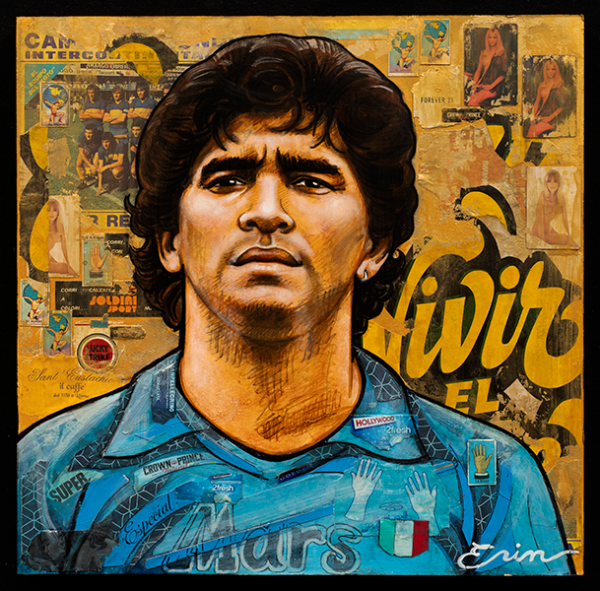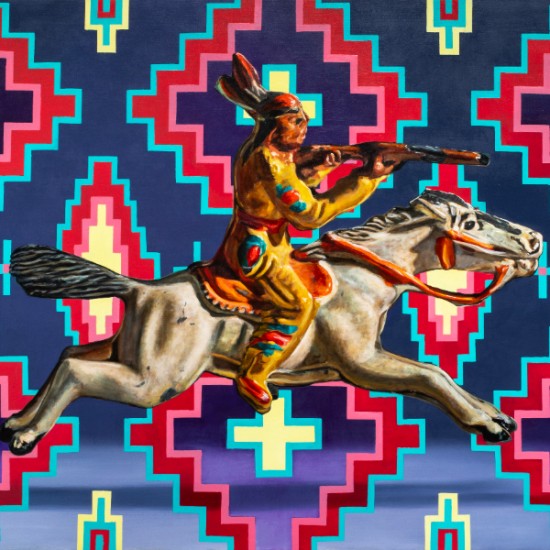Diego Maradona (born October 30, 1960, Buenos Aires, Argentina—died November 25, 2020, Buenos Aires) was an Argentine football (soccer) player who is generally regarded as the top footballer of the 1980s and one of the greatest of all time. Renowned for his ability to control the ball and create scoring opportunities for himself and others, he led club teams to championships in Argentina, Italy, and Spain, and he starred on the Argentine national team that won the 1986 World Cup. Maradona displayed football talent early, and at age eight he joined Las Cebollitas (“The Little Onions”), a boys’ team that went on to win 136 consecutive games and a national championship. He signed with Argentinos Juniors at age 14 and made his first-division debut in 1976, 10 days before his 16th birthday. Only four months later he made his debut with the national team, becoming the youngest Argentine ever to do so. Although he was excluded from the 1978 World Cup-winning squad because it was felt that he was still too young, the next year he led the national under-20 team to a Junior World Cup championship. Maradona moved to Boca Juniors in 1981 and immediately helped them gain the championship. He then moved to Europe, playing with FC Barcelona in 1982 (and winning the Spanish Cup in 1983) and then SSC Napoli (1984–91), where he enjoyed great success, raising the traditionally weak Naples side to the heights of Italian football. With Maradona the team won the league title and cup in 1987 and the league title again in 1990. Maradona’s stint with Napoli came to an end when he was arrested in Argentina for cocaine possession and received a 15-month suspension from playing football. Next he played for Sevilla in Spain and Newell’s Old Boys in Argentina. In 1995 he returned to Boca Juniors and played his last match on October 25, 1997. Maradona’s career with the Argentine national team included World Cup appearances in 1982, 1986, 1990, and 1994. He dominated the 1986 competition in Mexico. In a 2–1 quarterfinal victory over England, he scored two of the most memorable goals in World Cup history. The first was scored with his hand (the referee mistakenly thought the ball had struck his head), a goal now remembered as the “Hand of God” goal. The second occurred after Maradona gained possession of the ball at midfield and dribbled through a pack of English defenders and past the keeper before depositing the ball in the goal. He did not finish the 1994 World Cup, because he tested positive for the drug ephedrine and was again suspended. Maradona also played on South American championship-winning teams in 1987 and 1989. A stocky and tenacious midfielder, Maradona became a hero of the lower classes of Argentina (from which he hailed) and of southern Italy, where he led Napoli to victories over the wealthier northern clubs. He played 490 official club games during his 21-year professional career, scoring 259 goals; for Argentina he played 91 games and scored 34 goals. An Internet poll conducted by the Fédération Internationale de Football Association named Maradona the top player of the 20th century.
My portrait of Diego Maradona totally signifies a new approach. I had long wanted to celebrate Maradona; my trip to Argentina this March; as well as my time in Italy; strengthened my desire to pay homage to one of the greatest futbol players of all time. Before I left on my trip to Argentina, I created a mural for a local Santa Fe restaurant, Piazza Caffe, in which I recreated a piece by mid-century modern Italian fresco painter Pino Casarini. The mural called for a large area to be gold leafed with 24k gold— something I had never attempted. I enlisted the help of fellow Blue Ring Gallery artist Robin Jones. The exciting process of gold leafing is one in which I brought back to the Diego Maradona portrait. I layered various pieces of metallic gold post consumer waste with actual gold leaf, sanded & rubbed it away, then went over it with gold paint & glaze. The effect is sublime & exciting — & one I have since brought to a couple of the other new works as well… The trash I used to create Maradona includes Crown Prince Sardines, a poster from Buenos Aires that proclaims “To Live”, & Forever 21 clothing tags…






